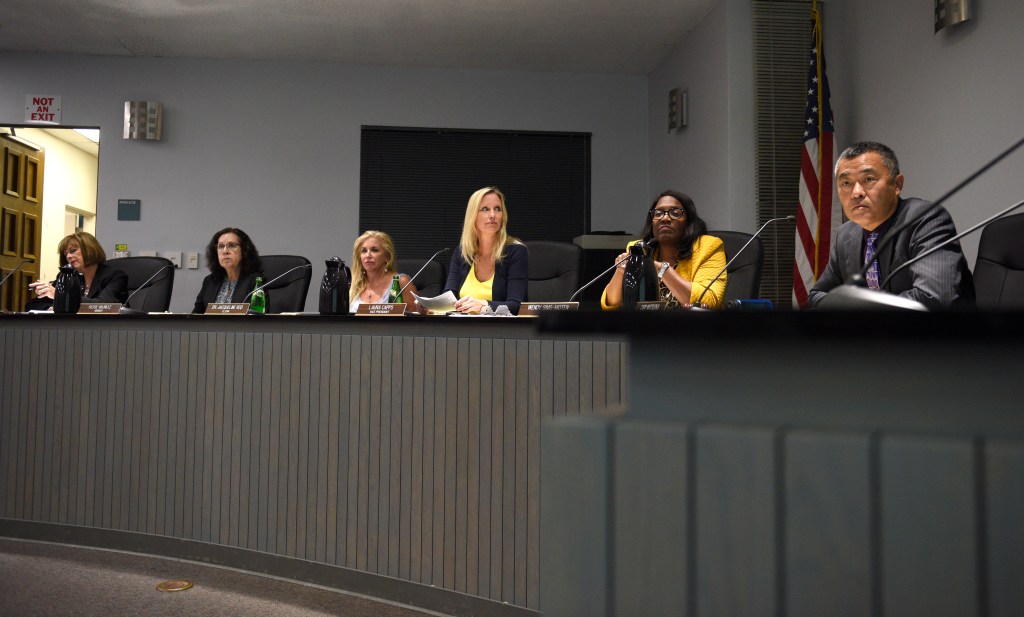Latinx and low-income students in the Santa Barbara Unified School District were placed in special education classes at far higher rates than their white counterparts, according to a report presented at the school board Tuesday.
District-wide, 1,752 of the 13,475 students are in special education. The report says that district-wide student demographics should closely resemble the demographics within special education, but the numbers are drastically different.
The district is 32 percent white, 60 percent Latinx, 17 percent English learner, and 58 percent socioeconomically disadvantaged. The students who make up the special education sector, however, are 23 percent white, 77 percent Latinx, 32 percent English learner, and 77 percent socioeconomically disadvantaged.
“I think in many cases we are searching for answers, and we find ourselves going down a path thinking, well, maybe it’s a disability, maybe that’s why the student isn’t learning,” said John Schettler, director of special education. “The data tells us it’s probably something else in a lot of those cases … . Many of these students should be able to get help without being labeled as having a disability.”
The California Department of Education (CDE) identified SBUSD as having a disproportionate number of Hispanic students eligible for special education in the category of specific learning disability. Schettler said he submitted the initial self-review to the department to determine the next steps to fix the discrepancy.
“We are constantly trying to improve systems that are so old and antiquated,” Schettler said. “So much of what we do is bound by the law … it feels like renovating an old house instead of tearing it down and rebuilding.”
Boardmember Kate Ford asked Schettler what he specifically is doing to respond to the department’s concerns. He said they are in the process of going through special education students’ files to ensure that assessments were administered in unbiased ways and “certain boxes were checked and not missed throughout the process” to find if the district has been compliant with CDE standards for identifying students with learning disabilities.
The full report can be read here.
STUDENT DEMOGRAPHICS
Following months of public scrutiny over poor student test scores, literacy, and overall low academic achievement across the Santa Barbara Unified School District, Superintendent Cary Matsuoka released a report Tuesday on the district’s demographics and funding to “provide context” to the public.
“As our community asks us questions about how we spend our money and what results we get, I want them to understand what we’re working with,” Matsuoka said about his report. “The perception of us as a high-wealth setting creates the perception of a high-wealth district, but we’re actually average.”
The key takeaways from the report included that 60 percent of students in the district are Latino, 58 percent are low-income, and the district gets $12,747 in funds per student, which is about the state average. Surrounding districts get significantly more. Montecito Union, for example, receives $37,246 per student, and Goleta Union receives $15,012 per student.
“If we got as much money per child as Goleta Union, we’d have $27 million more dollars. Oh my goodness, what could we do with $27 million,” Matsuoka said. “I think there’s a perception we’re like Santa Monica or Malibu. We’re not.”
The board spent a few minutes discussing the data points, but members Kate Ford and Laura Capps wanted to take it one step further.
“I want to focus less on the disparity with other schools,” Capps told Matsuoka. “I really appreciate the comparison, and it’s important to understand this. But now that we have the understanding, let’s find high-performing schools within comparable districts and learn from what they are doing well.”
The full report is available here.
THE SEARCH FOR A NEW LEADER
Three weeks ago, Matsuoka announced his early retirement from his position as superintendent of the Santa Barbara Unified School District. Although he will continue serving for seven more months, the board began the quest to select its next leader Tuesday night.
President Wendy Sims-Moten said the board will begin searching for a hiring firm by Wednesday, November 13. The bigger decision, she said, was whether to use an open or closed hiring process. A closed process keeps the candidates’ identities confidential until the end; an open process allows the vetting and interview process to be public and known to the community. Closed processes are more common, but it appeared the board was leaning toward an open one.
“I have been closely following SBCC’s search for a superintendent,” said Jill Rivera, who ran unsuccessfully for a seat on the school board in 2018. “SBCC’s process really made the community feel a part of it.”
Santa Barbara City College recently hired a new superintendent through an open process. The college held public forums to allow community members to ask the candidates questions, and anyone could submit comments to the Board of Trustees ahead of interviews with candidates.
Although they only spent a few minutes discussing it, the boardmembers appeared to be in agreement with an open process, although no decisions will be made until they choose a hiring firm.

